Early Childhood Education and Care Assignment - Module 1
VerifiedAdded on 2023/01/12
|6
|818
|53
Homework Assignment
AI Summary
This assignment on Early Childhood Education and Care (ECE) delves into various aspects of child development and related policies. It examines the link between educational programs and planning, emphasizing good habits in children. The assignment addresses the importance of children's health and safety, referencing the UN convention articles related to education, decision-making, rest, and a safe environment. It includes a link to a framework for children's services and provides three references from various sources. The core of the assignment focuses on the factors contributing to child development, such as proper guidance and a conducive environment, and explores theories from Erikson and Piaget. Furthermore, it outlines essential information to share with colleagues to support children's wellbeing, including guidance, health, safety, and fostering positive relationships. The assignment concludes by highlighting the importance of a sense of belonging and connectedness for children's overall development and learning ability. This assignment provides a comprehensive overview of ECE practices and principles.
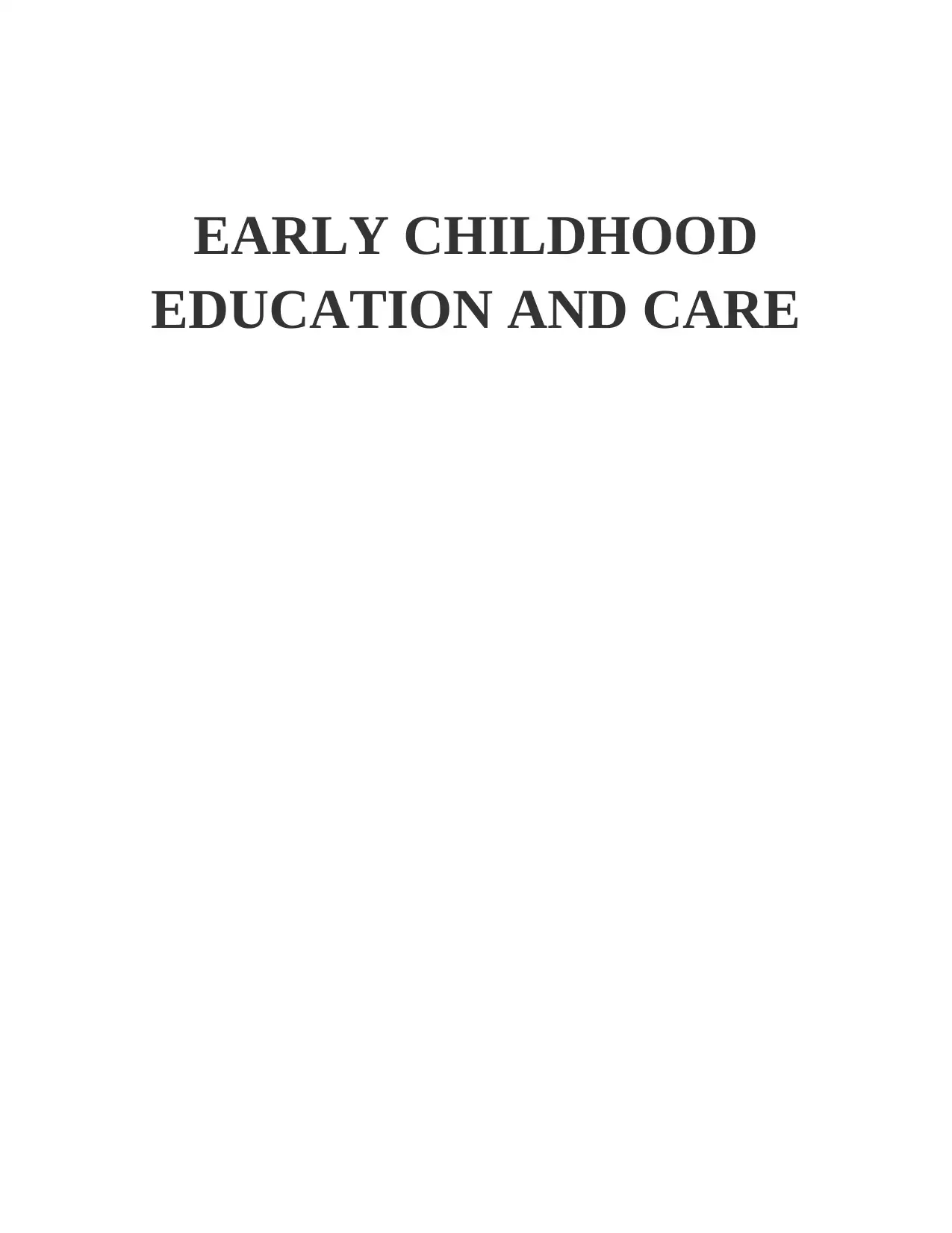
EARLY CHILDHOOD
EDUCATION AND CARE
EDUCATION AND CARE
Paraphrase This Document
Need a fresh take? Get an instant paraphrase of this document with our AI Paraphraser
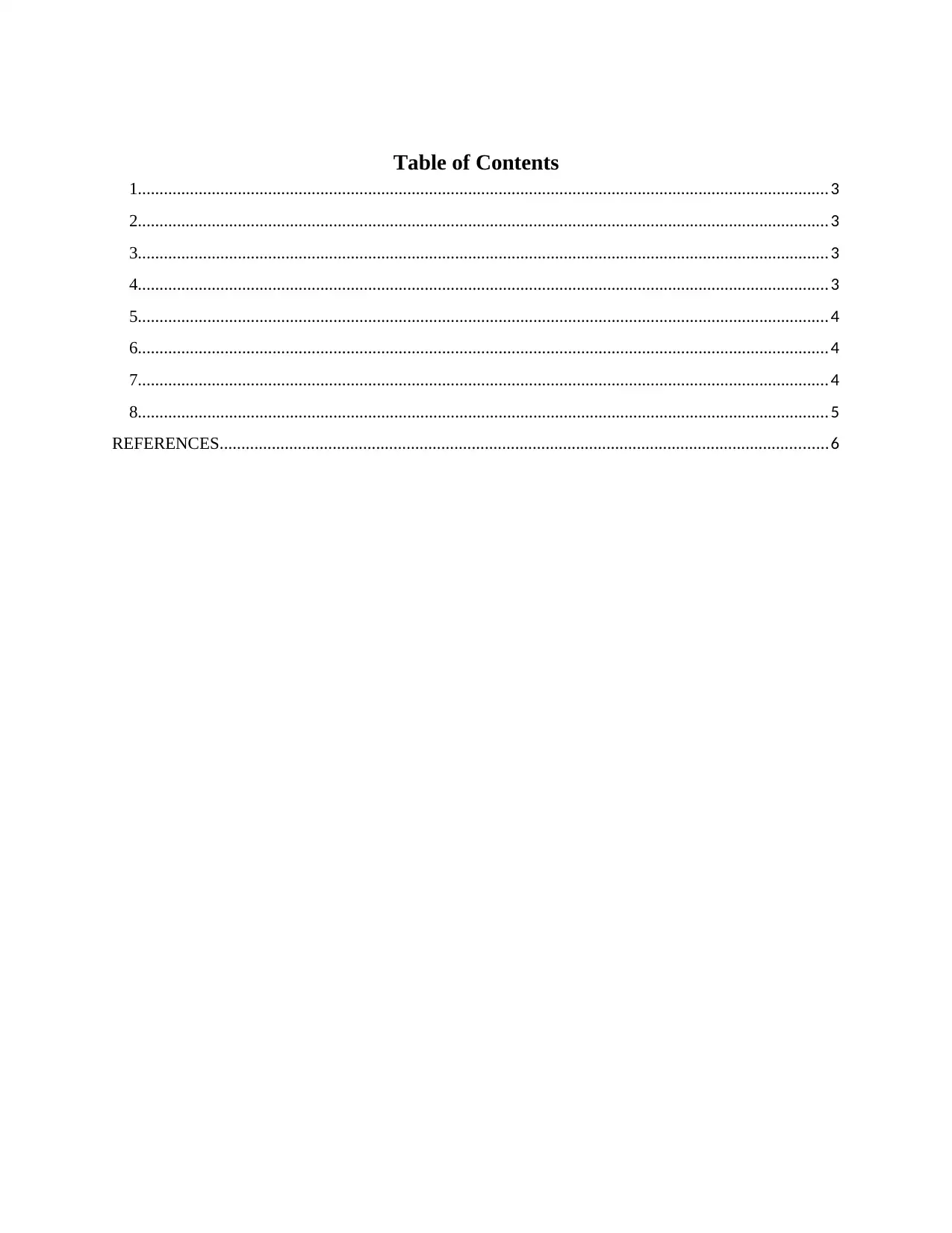
Table of Contents
1...............................................................................................................................................................3
2...............................................................................................................................................................3
3...............................................................................................................................................................3
4...............................................................................................................................................................3
5...............................................................................................................................................................4
6...............................................................................................................................................................4
7...............................................................................................................................................................4
8...............................................................................................................................................................5
REFERENCES............................................................................................................................................6
1...............................................................................................................................................................3
2...............................................................................................................................................................3
3...............................................................................................................................................................3
4...............................................................................................................................................................3
5...............................................................................................................................................................4
6...............................................................................................................................................................4
7...............................................................................................................................................................4
8...............................................................................................................................................................5
REFERENCES............................................................................................................................................6
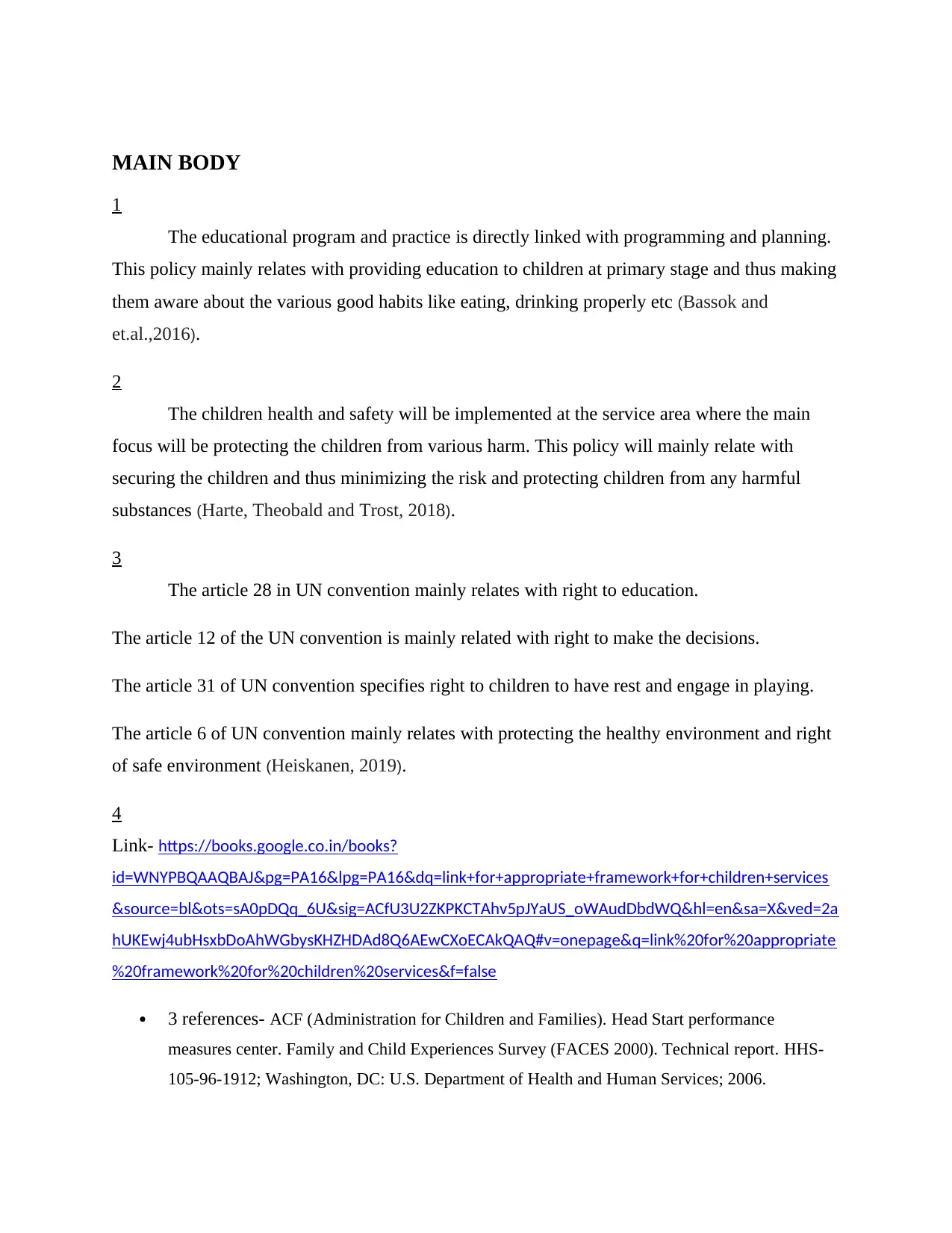
MAIN BODY
1
The educational program and practice is directly linked with programming and planning.
This policy mainly relates with providing education to children at primary stage and thus making
them aware about the various good habits like eating, drinking properly etc (Bassok and
et.al.,2016).
2
The children health and safety will be implemented at the service area where the main
focus will be protecting the children from various harm. This policy will mainly relate with
securing the children and thus minimizing the risk and protecting children from any harmful
substances (Harte, Theobald and Trost, 2018).
3
The article 28 in UN convention mainly relates with right to education.
The article 12 of the UN convention is mainly related with right to make the decisions.
The article 31 of UN convention specifies right to children to have rest and engage in playing.
The article 6 of UN convention mainly relates with protecting the healthy environment and right
of safe environment (Heiskanen, 2019).
4
Link- https://books.google.co.in/books?
id=WNYPBQAAQBAJ&pg=PA16&lpg=PA16&dq=link+for+appropriate+framework+for+children+services
&source=bl&ots=sA0pDQq_6U&sig=ACfU3U2ZKPKCTAhv5pJYaUS_oWAudDbdWQ&hl=en&sa=X&ved=2a
hUKEwj4ubHsxbDoAhWGbysKHZHDAd8Q6AEwCXoECAkQAQ#v=onepage&q=link%20for%20appropriate
%20framework%20for%20children%20services&f=false
3 references- ACF (Administration for Children and Families). Head Start performance
measures center. Family and Child Experiences Survey (FACES 2000). Technical report. HHS-
105-96-1912; Washington, DC: U.S. Department of Health and Human Services; 2006.
1
The educational program and practice is directly linked with programming and planning.
This policy mainly relates with providing education to children at primary stage and thus making
them aware about the various good habits like eating, drinking properly etc (Bassok and
et.al.,2016).
2
The children health and safety will be implemented at the service area where the main
focus will be protecting the children from various harm. This policy will mainly relate with
securing the children and thus minimizing the risk and protecting children from any harmful
substances (Harte, Theobald and Trost, 2018).
3
The article 28 in UN convention mainly relates with right to education.
The article 12 of the UN convention is mainly related with right to make the decisions.
The article 31 of UN convention specifies right to children to have rest and engage in playing.
The article 6 of UN convention mainly relates with protecting the healthy environment and right
of safe environment (Heiskanen, 2019).
4
Link- https://books.google.co.in/books?
id=WNYPBQAAQBAJ&pg=PA16&lpg=PA16&dq=link+for+appropriate+framework+for+children+services
&source=bl&ots=sA0pDQq_6U&sig=ACfU3U2ZKPKCTAhv5pJYaUS_oWAudDbdWQ&hl=en&sa=X&ved=2a
hUKEwj4ubHsxbDoAhWGbysKHZHDAd8Q6AEwCXoECAkQAQ#v=onepage&q=link%20for%20appropriate
%20framework%20for%20children%20services&f=false
3 references- ACF (Administration for Children and Families). Head Start performance
measures center. Family and Child Experiences Survey (FACES 2000). Technical report. HHS-
105-96-1912; Washington, DC: U.S. Department of Health and Human Services; 2006.
⊘ This is a preview!⊘
Do you want full access?
Subscribe today to unlock all pages.

Trusted by 1+ million students worldwide
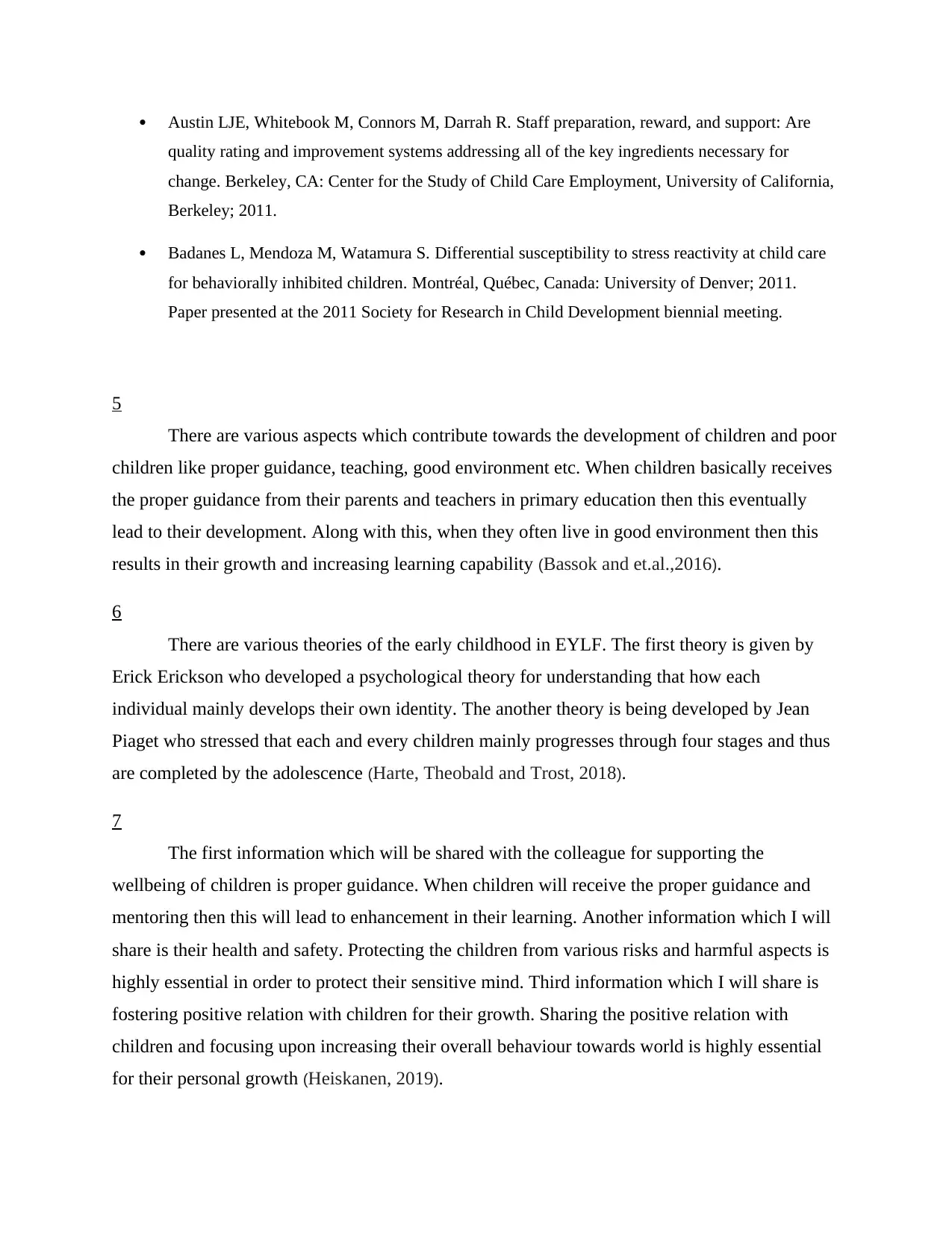
Austin LJE, Whitebook M, Connors M, Darrah R. Staff preparation, reward, and support: Are
quality rating and improvement systems addressing all of the key ingredients necessary for
change. Berkeley, CA: Center for the Study of Child Care Employment, University of California,
Berkeley; 2011.
Badanes L, Mendoza M, Watamura S. Differential susceptibility to stress reactivity at child care
for behaviorally inhibited children. Montréal, Québec, Canada: University of Denver; 2011.
Paper presented at the 2011 Society for Research in Child Development biennial meeting.
5
There are various aspects which contribute towards the development of children and poor
children like proper guidance, teaching, good environment etc. When children basically receives
the proper guidance from their parents and teachers in primary education then this eventually
lead to their development. Along with this, when they often live in good environment then this
results in their growth and increasing learning capability (Bassok and et.al.,2016).
6
There are various theories of the early childhood in EYLF. The first theory is given by
Erick Erickson who developed a psychological theory for understanding that how each
individual mainly develops their own identity. The another theory is being developed by Jean
Piaget who stressed that each and every children mainly progresses through four stages and thus
are completed by the adolescence (Harte, Theobald and Trost, 2018).
7
The first information which will be shared with the colleague for supporting the
wellbeing of children is proper guidance. When children will receive the proper guidance and
mentoring then this will lead to enhancement in their learning. Another information which I will
share is their health and safety. Protecting the children from various risks and harmful aspects is
highly essential in order to protect their sensitive mind. Third information which I will share is
fostering positive relation with children for their growth. Sharing the positive relation with
children and focusing upon increasing their overall behaviour towards world is highly essential
for their personal growth (Heiskanen, 2019).
quality rating and improvement systems addressing all of the key ingredients necessary for
change. Berkeley, CA: Center for the Study of Child Care Employment, University of California,
Berkeley; 2011.
Badanes L, Mendoza M, Watamura S. Differential susceptibility to stress reactivity at child care
for behaviorally inhibited children. Montréal, Québec, Canada: University of Denver; 2011.
Paper presented at the 2011 Society for Research in Child Development biennial meeting.
5
There are various aspects which contribute towards the development of children and poor
children like proper guidance, teaching, good environment etc. When children basically receives
the proper guidance from their parents and teachers in primary education then this eventually
lead to their development. Along with this, when they often live in good environment then this
results in their growth and increasing learning capability (Bassok and et.al.,2016).
6
There are various theories of the early childhood in EYLF. The first theory is given by
Erick Erickson who developed a psychological theory for understanding that how each
individual mainly develops their own identity. The another theory is being developed by Jean
Piaget who stressed that each and every children mainly progresses through four stages and thus
are completed by the adolescence (Harte, Theobald and Trost, 2018).
7
The first information which will be shared with the colleague for supporting the
wellbeing of children is proper guidance. When children will receive the proper guidance and
mentoring then this will lead to enhancement in their learning. Another information which I will
share is their health and safety. Protecting the children from various risks and harmful aspects is
highly essential in order to protect their sensitive mind. Third information which I will share is
fostering positive relation with children for their growth. Sharing the positive relation with
children and focusing upon increasing their overall behaviour towards world is highly essential
for their personal growth (Heiskanen, 2019).
Paraphrase This Document
Need a fresh take? Get an instant paraphrase of this document with our AI Paraphraser
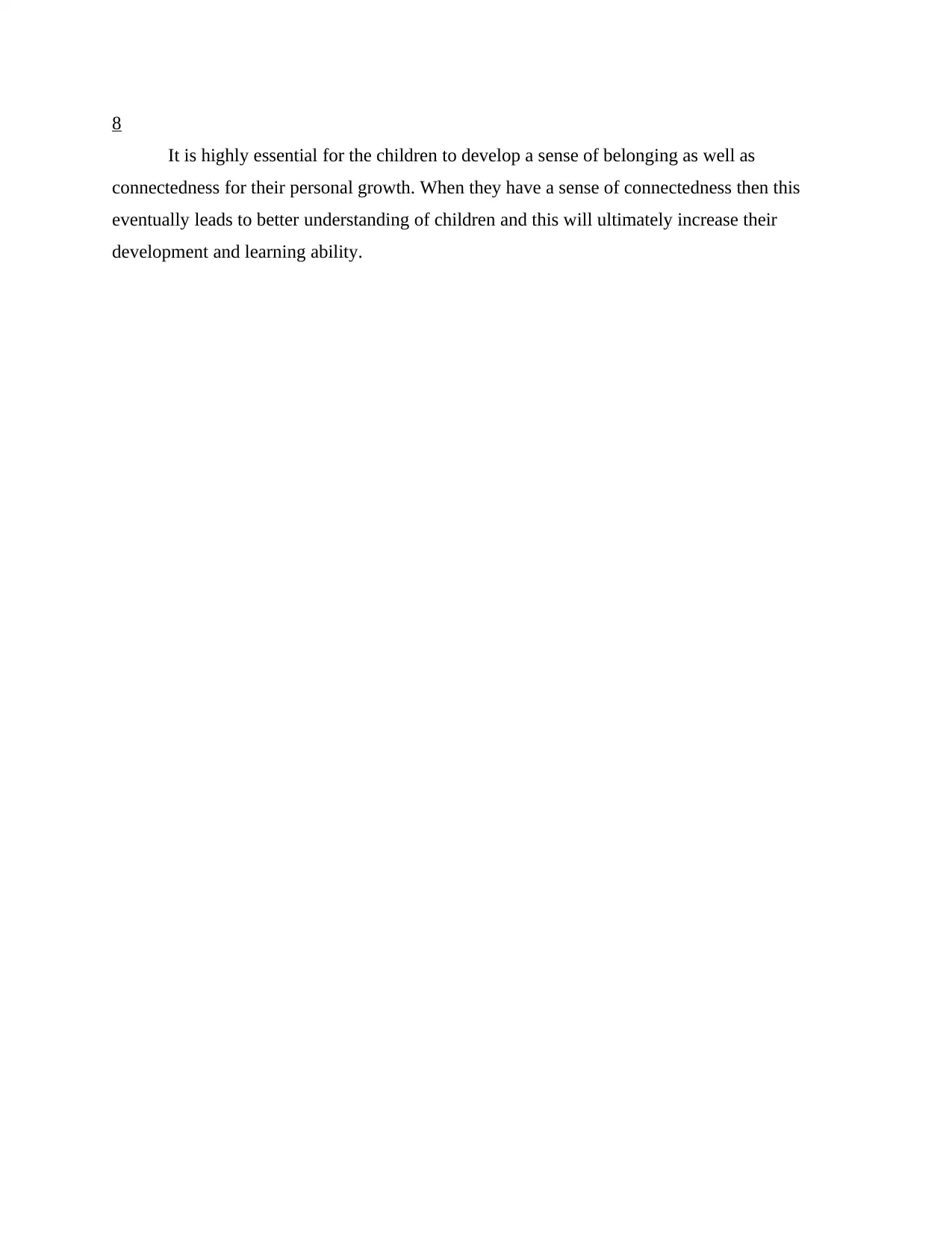
8
It is highly essential for the children to develop a sense of belonging as well as
connectedness for their personal growth. When they have a sense of connectedness then this
eventually leads to better understanding of children and this will ultimately increase their
development and learning ability.
It is highly essential for the children to develop a sense of belonging as well as
connectedness for their personal growth. When they have a sense of connectedness then this
eventually leads to better understanding of children and this will ultimately increase their
development and learning ability.
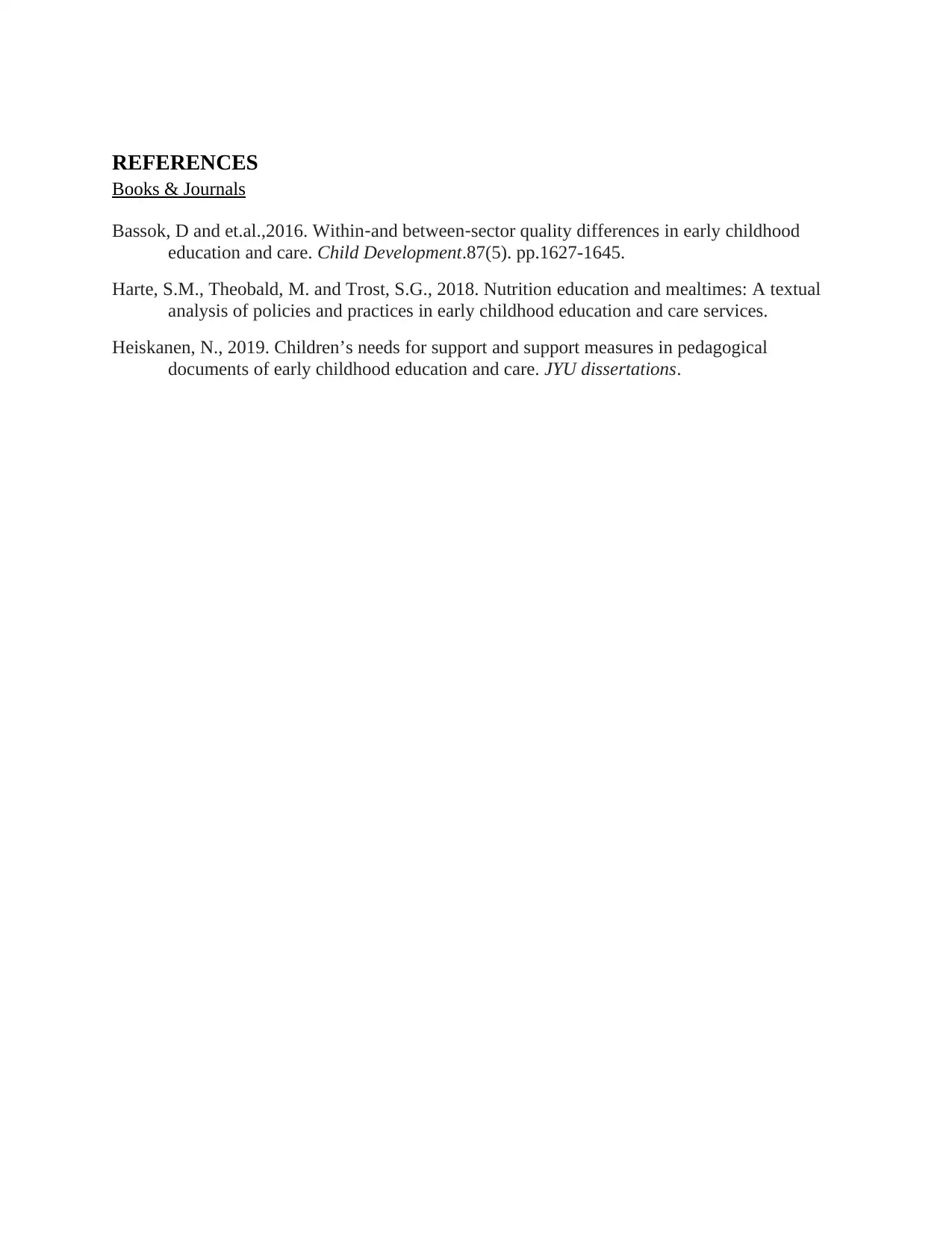
REFERENCES
Books & Journals
Bassok, D and et.al.,2016. Within‐and between‐sector quality differences in early childhood
education and care. Child Development.87(5). pp.1627-1645.
Harte, S.M., Theobald, M. and Trost, S.G., 2018. Nutrition education and mealtimes: A textual
analysis of policies and practices in early childhood education and care services.
Heiskanen, N., 2019. Children’s needs for support and support measures in pedagogical
documents of early childhood education and care. JYU dissertations.
Books & Journals
Bassok, D and et.al.,2016. Within‐and between‐sector quality differences in early childhood
education and care. Child Development.87(5). pp.1627-1645.
Harte, S.M., Theobald, M. and Trost, S.G., 2018. Nutrition education and mealtimes: A textual
analysis of policies and practices in early childhood education and care services.
Heiskanen, N., 2019. Children’s needs for support and support measures in pedagogical
documents of early childhood education and care. JYU dissertations.
⊘ This is a preview!⊘
Do you want full access?
Subscribe today to unlock all pages.

Trusted by 1+ million students worldwide
1 out of 6
Related Documents
Your All-in-One AI-Powered Toolkit for Academic Success.
+13062052269
info@desklib.com
Available 24*7 on WhatsApp / Email
![[object Object]](/_next/static/media/star-bottom.7253800d.svg)
Unlock your academic potential
Copyright © 2020–2025 A2Z Services. All Rights Reserved. Developed and managed by ZUCOL.




